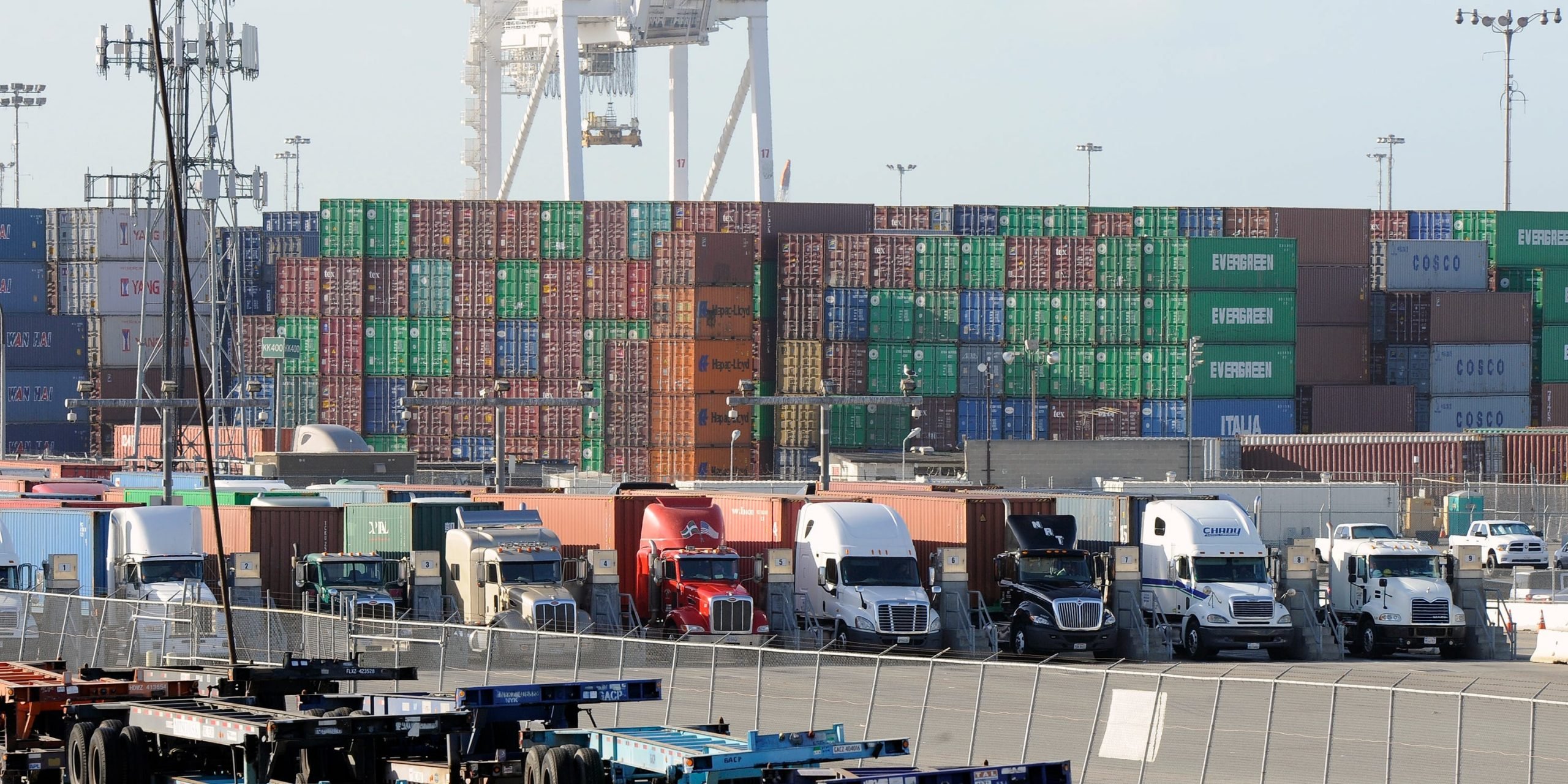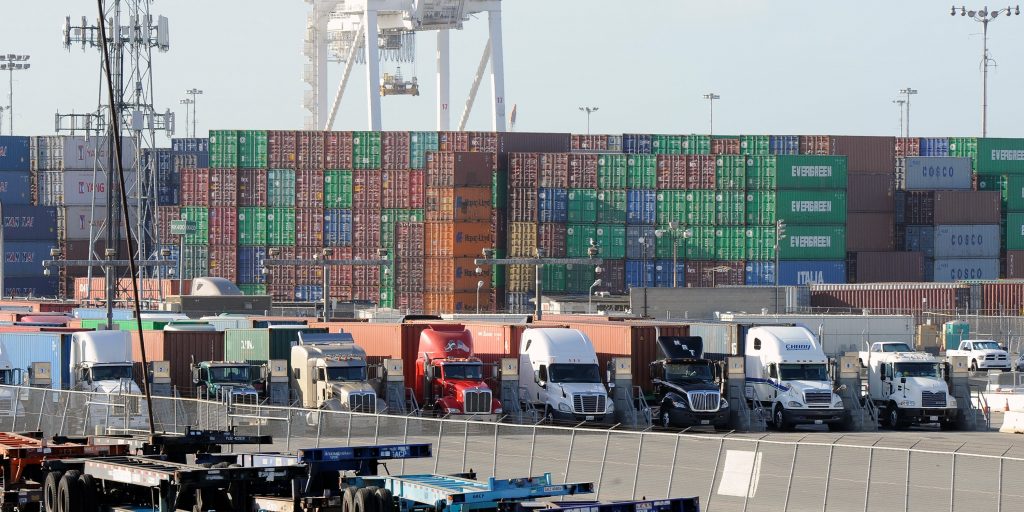
Bob Riha, Jr./Getty Images
- The US doesn't have enough truck drivers to solve the shipping crisis. Corporate greed is to blame, one 20-year driver said.
- Raising pay is just half of it – they'd also have to accept a smaller profit margin in the port business.
- By prioritizing profits over compensation, firms created a workforce "that will leave in a heartbeat," he says.
Companies know how to solve the supply-chain crisis. They just don't want to pony up the cash.
Nearly every element of the US supply chain is stretched too thin. Key ports are badly congested, with a historic number of cargo ships waiting to unload containers. The mess boils down to "pure supply and demand economics," Ryan Johnson, a 20-year truck driver, said in an October 27 Medium post. As the economy reopened, Americans flush with pandemic savings unleashed a wave of pent-up demand that has swamped the supply chain.
At this stage, Johnson doesn't see any immediate solutions, because trucking companies would rather wait out the current supply-chain crisis than rethink their wage structure and profit margins. He says they could – but they won't.
Among the biggest choke points is the country's supply of port truckers. Only a handful of trucks have the tags, registration, and driver certifications needed to work in shipping ports, and companies can charge higher rates elsewhere, leaving little incentive to invest in the port business, Johnson said.
The industry has also long relied on "low wages and bare minimum staffing" to boost their profits, Johnson told Insider. When the pandemic hit and swaths of drivers were laid off, many saw little reason to return, and he sees no signs that trucking companies will raise wages to bring workers back.
"You can go make $20 an hour at McDonald's with no benefits, or you can make $4 an hour driving a truck with no benefits," Johnson, referring to how many drivers are paid per load, not by the hour. "I don't blame them for leaving."
Also, the massive backlog of containers guarantees truck drivers will run at full capacity for the foreseeable future. The bottlenecks hurt suppliers and consumers, but shipping companies' profit margins are intact, Johnson said.
Trucking companies, then, are in no rush to rehire. More drivers would only mean higher operating costs. Automation at ports would theoretically make firms more productive, but that would also require pricey investments that business owners just don't want to make, Johnson said.
"Since they're not paying the workers any more than they did last year or five years ago, the whole industry sits back and cashes in on the mess it created," he said.
The government can't solve the shipping crisis
The Biden administration announced in October that the Port of Los Angeles, Walmart, UPS, Fedex, and other companies would move to 24/7 operations to ease shipping pressures. But even around-the-clock work won't do the trick, Johnson said.
For starters, labor laws and biological needs keep truckers from operating around the clock. The few companies that work with ports also lack the equipment needed to haul more containers. While ports and warehouses are working 24/7, the drivers crucial to moving items between them are still scarce.
Deploying the National Guard to work as drivers would probably do more harm than good, Johnson said. Members would "have no idea what they're doing" the moment they arrive in the port, since the situation is already a logistical mess.
Using the National Guard would also prompt regular drivers to leave, Johnson added. Shipping capacity will plunge, and once the National Guard leaves, companies will have to make do with even fewer drivers.
The problem, like with the greater labor shortage, is low pay, Johnson said. Trucking "is the same as it's always been," with long hours and unattractive wages. The pandemic led many truckers to realize they would be better off elsewhere, and the industry hasn't adapted yet.
By not paying drivers more, companies "created the labor force that will leave in a heartbeat," Johnson said.
"When you run everything on a shoestring budget and the shoestring breaks, you can't put it back together again," he said. "This is the new normal, there's no doubt in my mind about that."

